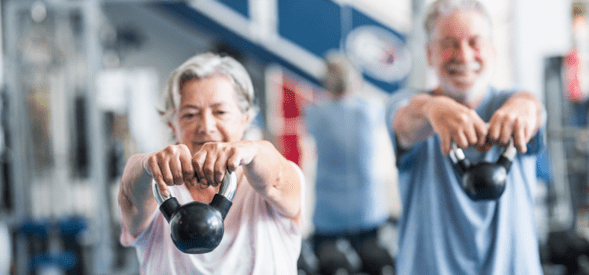
18 May May ’22 Newsletter

Welcome to the May newsletter! This month, we share key facts about osteoarthritis and check in on how exercise can be an effective treatment for osteoarthritis symptoms. Also, you can read the education quarter to get the low-down on using kinesiology tape for treating injuries.

Facts about Osteoarthritis
Osteoarthritis is a chronic condition that causes the joints in your body to become inflamed and damaged. It causes the cartilage that covers the ends of bones to break down over time. This creates painful friction when moving the joint.
Osteoarthritis is the most common lifestyle disease in individuals over 65 years, but can also affect individuals as young as 30 years of age. It can occur in any joint in the body, but most commonly affects larger joints such as the hips and knees.
Common osteoarthritis symptoms include joint pain, stiffness, swelling, reduced range of movement, and a loss of flexibility in the affected joints. Symptoms can range from mild to severe and can intensify over time.
Exercise for Osteoarthritis
Did you know that patient education, exercise, and weight loss are recommended by researchers as the first line of treatment for osteoarthritis?
A regular exercise plan that is tailored to your needs is one of the most effective treatment methods for managing osteoarthritis symptoms. Exercise can help to increase your range of motion and reduce pain caused by osteoarthritis. Strengthening exercises can help to relieve stiffness in the joints.
At St Leonards Physio, we are providers of the Good Life with Arthritis (or GLA:D™) Program. GLA:D™ is an education and exercise program developed by researchers for people with hip or knee osteoarthritis symptoms.
What does the GLA:D program involve?
- An initial appointment to explain the program and collect data on your current functional ability.
- 2 sessions focused on education about osteoarthritis, how the exercises can improve joint stability and how to apply this in your everyday life.
- 2 group training sessions a week for 6 weeks focused on improving muscle control of the joint, to reduce your symptoms and improve your quality of life.
You can find out more about how we treat osteoarthritis here. Or contact us today to find out how to enrol in the GLA:D program.
The Education Quarter
The low-down on kinesiology tape
What is kinesiology tape?
As physiotherapists, we use a range of treatment methods to help increase your mobility as you recover from an injury, including therapeutic taping. Kinesiology tape (or kinesio tape) is an elastic, therapeutic tape that we use to provide your joint with support, without limiting movement.
Why is kinesio tape used?
We generally use kinesio tape to help reduce pressure on damaged muscles and joints, increase mobility, lessen pain, and reduce swelling. We also use it to reduce the chances of further damage to an area that is weak from injury. If you are prone to injury in a certain area, taping may also give you some protection.
During an appointment, we will assess your condition and determine if kinesio tape is necessary, and then work out the best way to apply it. We apply it in a pattern that will help to support your specific injury. Kinesio tape is stretchy and flexible. It’s designed to be elastic like your skin, so that you can move freely when it is applied. When applied, it lifts the layers of skin and tissue, encouraging blood flow.
There is also some research to suggest that using kinesio tape changes the signals between your brain and the skin over an injured area. The tape helps to strengthen the signals, increasing connectivity between the area and the brain.
No! We think the different colours look cool though, the brighter the better!
If you want to know more about the different ways we support you after an injury, contact us to book your appointment!
Happy to help.
If you’d like to book an appointment, or have questions about any pain or injury you may be experiencing, please get in touch.




